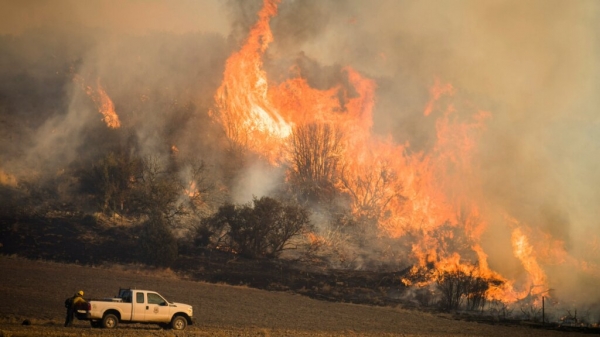A new study using NASA satellite data reveals how drought affects the recovery of western ecosystems from fire, a result that could provide meaningful information for conservation efforts.
A new study using NASA satellite data reveals how drought affects the recovery of western ecosystems from fire, a result that could provide meaningful information for conservation efforts.
The West has been witnessing a trend of increasing number and intensity of wildland fires. Historically a natural part of the region's ecology, fires have been exacerbated by climate change—including more frequent and intense droughts—and past efforts to suppress fires, which can lead to the accumulation of combustible material like fallen branches and leaves. But quantifying how fire and drought jointly affect ecosystems has proven difficult.
In the new study, researchers analyzed over 1,500 fires from 2014 to 2020 across the West, and also gathered data on drought conditions dating back to 1984. They found that droughts make it harder for grasslands and shrublands, such as those in Nevada and Utah, to recover after fires—even the less severe blazes. Forests, if not burned too badly, rebound better than grasslands and shrublands because some forest roots can tap into water deeper in the ground. The team reported its findings in the February 2024 issue of Nature Ecology & Environment.
Read more at NASA
Image: California’s 2017 Thomas Fire (shown) was included in a new analysis of more than 1,500 wildland fires teasing out how drought and fire combine to affect western U.S. lands. (Credit: USDA Forest Service/ Stuart Palley)




